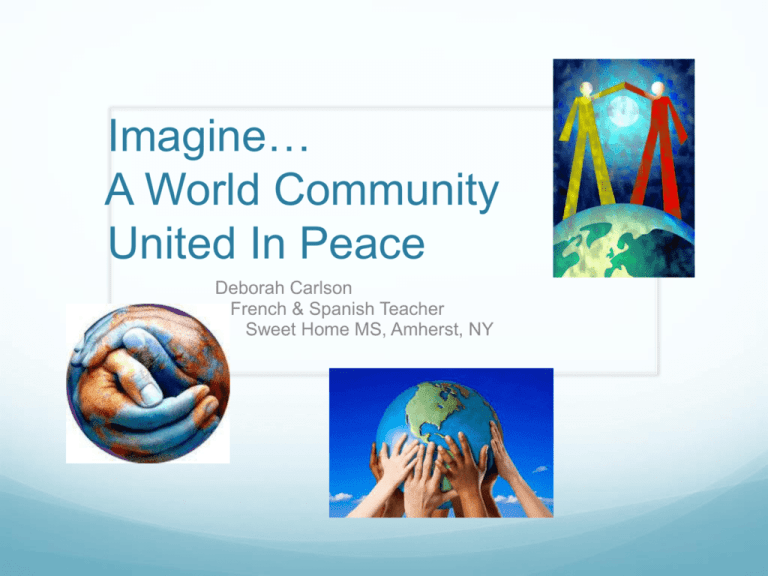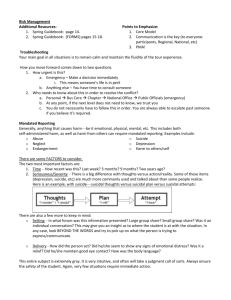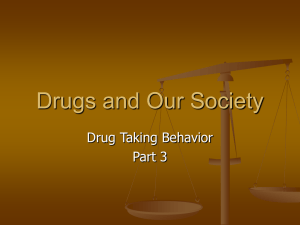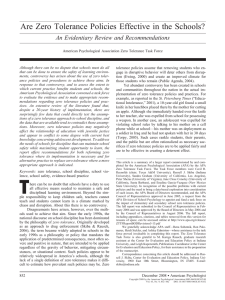a_world_community
advertisement

Imagine… A World Community United In Peace Deborah Carlson French & Spanish Teacher Sweet Home MS, Amherst, NY Imagine All The People Eva Cassidy Why Build A Community? It was once more a part of life in our society. Caring and sharing were natural components. Now, violence is seen all around us, everywhere. Students are not a part of a caring community. Students need to build skills: cooperation & collaboration. We all need to understand & respect diversity. Students need to be concerned about everyone’s welfare and to learn to encourage one another. Community Requires Tolerance For Others Community Requires Peace Resources For Teachers Building Character & Community in the Classroom by Rick DuVall The Peace Book by Louise Diamond Goals… for TODAY and DURING THE WEEK TODAY teacher’s will acquire: DURING THE WEEK teachers: • are encouraged to create a Summer Institute community. • are challenged to incorporate a “Peace Initiative” in their own classrooms. • are invited to share ideas with new friends. • are expected to… • LISTEN with openness • LEARN from colleagues • LAUGH A LOT at all times • strategies to create community • knowledge of the 4 peace principles • conflict resolution techniques • resources to develop programs • a personal goal for the week … all important components of a healthy, happy community! What do you do to create a COMMUNITY of acceptance in your classroom? The 4 Underlying Principles of a Culture of Peace COMMUNITY We are all inter-related and interdependent. We need to express mutual respect, appreciation of differences, and honoring the equal dignity and worth of each human being. COOPERATION We are co-creating our shared reality. Power ‘with’ rather than power ‘over’ makes possible a world that works for all. The 4 Underlying Principles of a Culture of Peace NON-VIOLENCE The realization that to harm another is to harm ourselves. We choose to relate to the goodness in each and every person. WITNESS When we embody peace and encode it within us, we become the example and teacher for others. All actions of peace begin from within ourselves. COMMUNITY We are inter-related and interdependent. We need to express mutual respect, appreciation of differences, and honoring the equal dignity and worth of all. Babak and Friends Building a Community of Tolerance Teaching students through entertainment 1. 2. 3. 4. Discuss ideas of tolerance & diversity. Watch video. Discuss reactions after watching. Brainstorm positive ways to interact. • Valuing Our Names: Why were you given your first name? What nationality is your last name? Does your name have a meaning? • Move if You: Begin in a circle. The center person states a “move if you”, those who relate to statement move, one without seat goes to center to make new statement. Discuss group’s uniqueness. • My Favorite Things: Each person states a favorite thing. Teacher writes item on separate paper, no repeats. Papers placed around room. Students go to stations writing names where they match. • What does our community need? Brainstorm class, school, community needs. Decide upon a group project. COOPERATION We are co-creating our shared reality. Power ‘with’ rather than power ‘over’ makes possible a world that works for all. • Co-Create: practice the “rule of seven”, 7 new ideas (chair over) • Talk on Paper: One dialog on paper discussing a world issue. • Play together: • Pair Drawing: 2 draw using one pen, no talking. • Snap-Count: 4-count of hands to knees, clap, snap left, snap right. On 1st snap, say your number. On 2nd snap, call other #. • Say & Do: Duplicate materials for partners (blocks, paper, etc.) One builds/draws, then describes without other seeing. NON-VIOLENCE Non-violence is the realization that to harm another is to harm ourselves. We need to choose to relate to the goodness in each and every person. • Hypnotic Effect of Violence: What is your reaction? • Practice Nonviolent Communication •Tune it Out: Discuss how/where students view/interact with violence in their lives (TV, video games, etc.). Challenge students to pick a peaceful alternative for one week, writing down choices. • Alternatives to Violence: Students (or teachers) find world articles dealing with societal problems (TL countries). Groups read & discuss article and list possible solutions on chart paper (TL?). • Discuss international Peace Organizations. WITNESS When we embody peace and encode it within us, we become the example and teacher for others. All actions of peace begin from within ourselves. • What is your personal story to share (tolerance, diversity)? • How is conflict resolved in your classroom (teacher-student, studentstudent)? • Do you have diversity/tolerance/peace programs in your school or district? • Are you aware of club programs to address issues of tolerance and peace within the school community and/or global community? • Adopt a place in the world as your special concern. • Peacing It Together: Draw a Peace symbol. Write personal peace commitments in each of the four parts of the peace symbol. What are your ideas for a Peace Initiative ? Resources for your personal Peace Initiative • International Day of Peace, September 21 www.internationaldayofpeace.org • Conflict Resolution Education Network www.crenet.org • Make the Peace Campaign www.makethepeace.org • Peacelinks www.peacelinks.org, click Youth Links • Mediation in the Workplace www.mediate.com/workplace • The Third Side (conflict resolution) www.thirdside.org • Teaching Tolerance www.teachingtolerance.org • The National Multicultural Institute www.nmci.org • National Assoc. for Multicultural Education www.nameorg.org What a Wonderful World… a World of Peace Louis Armstrong






